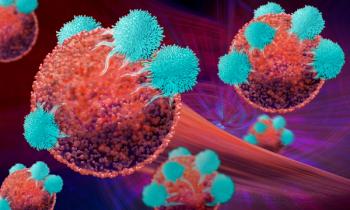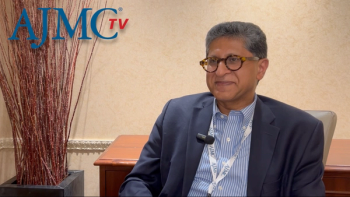
- June 2024
- Volume 30
- Issue 7
Whither CAR T? Will the FDA Being Under the Hood and the Availability of Bispecifics Make These Therapies Less Attractive?
The past few years have seen major innovation and progress in the oncology landscape with the advent of chimeric antigen receptor (CAR) T-cell and bispecific T-cell engager (BiTE) therapies. These have been approved exclusively for the treatment of hematologic malignancies, with less data for solid tumors. There are several clinical scenarios, especially within the multiple myeloma (MM) space, where overlapping indications exist between CAR T and BiTE therapies. With several advantages to BiTE therapies and the FDA Oncologic Drugs Advisory Committee (ODAC) looking more closely at the safety of CAR T-cell therapy, will CAR T become a less appealing treatment option?
CAR T-Cell Therapy Overview
CAR T-cell therapy involves the removal of a patient’s T cells from the blood through a process called leukapheresis. The T cells are then genetically engineered to express a CAR so that they target cancer cells.
CAR T therapies have had promising results and offer an advantage in that they are often given as a single infusion.1 However, there are limitations to the use of these agents: The drug must be manufactured from a patient’s own T cells, it usually takes 24 to 30 days before it is ready, and manufacturing failure rates are between 0 and 18%.2-6 A patient must be a viable candidate who can wait for the manufacture period, as well as maintain geographic proximity for 30 days after administration.7 During the manufacture period, patients often receive bridging therapy for disease control, and immediately prior to CAR T infusion patients must also be treated with a course of lymphodepleting chemotherapy.2-6 In addition to the toxicity risk from this required additional therapy, CAR T therapy also comes with significant adverse event risks, with black box warnings for cytokine release syndrome (CRS) and immune effector cell–associated neurotoxicity syndrome (ICANS). These safety concerns necessitate a Risk Evaluation and Mitigation Strategies (REMS) program for these agents and were significant enough to trigger a closer look at the risk vs benefit of CAR T in earlier lines of therapy by ODAC.8
Bispecific Antibodies Overview
The emerging bispecific antibodies, which recruit T cells to tumor cells, exemplified by BiTEs, have facilitated the development of tumor immunotherapy. Since blinatumomab, a CD3/CD19 BiTE, was approved by the FDA in 2014 for Philadelphia chromosome negative relapsed or refractory B-cell precursor acute lymphoblastic leukemia, BiTEs have seen rapid development.9 Recently, 3 new BiTEs utilizing 2 mechanisms of action (MOA) have been approved by the FDA for the treatment of relapsed or refractory multiple myeloma (RRMM). Elranatamab and teclistamab are both B-cell maturation antigen–directed CD3 engagers,10,11 whereas talquetamab is a G-protein–coupled receptor, class C group 5 member D–directed CD3 engager.10-12 The combination of the 2 BiTE agents with differing MOA is being explored in a clinical study that has shown preliminary potential.13
Like CAR T, BiTEs come with black box warnings for CRS and ICANS and require a REMS program. Because of the safety concerns, it is likely that these agents will see more use in the inpatient setting or more specialized institutions during step-up dosing. Evolent, a specialty and primary care management company based in Arlington, Virginia, sees requests for these agents more often from hospital-based or larger academic institutions. However, as more data and experience develop over time with these classes of therapy, more treatment protocols will be developed, and providers will be more comfortable prescribing them. Evolent was able to gain insight from its external Oncology Scientific Advisory Board (OSAB) on the potential for administration of BiTEs in the outpatient setting. Like other studies and reviews on the topic, the OSAB consensus was that over time, the use of these agents would likely shift into the community setting.14,15
Beyond Hematologic Malignancies: BiTE
The clinical efficacy demonstrated from BiTEs in hematological malignancies lends to the study of their application in solid tumors. However, first-generation BiTE therapies have failed to demonstrate clinically meaningful results, while presenting severe adverse events and dose-limiting toxicities. This is evidenced by catumaxomab in the treatment of malignant ascites of epithelial cancer. Although it has been withdrawn from the market, there are ongoing trials investigating its use in malignant ascites and peritoneal carcinomatosis in gastric and ovarian cancers.16 Solitomab, another first-generation BiTE studied in relapsed/refractory advanced-stage solid tumors, also presented clinically significant dose-limiting toxicities, including diarrhea and liver toxicity. These adverse events prevented dose escalation to therapeutic levels.17 In December 2023, tarlatamab was granted priority review for the treatment of adult patients with advanced small cell lung cancer with disease progression on or after platinum-based chemotherapy. Tarlatamab is a BiTE immunotherapy targeting delta-like ligand 3 and CD3 and received FDA approval on May 16, 2024. This is based on the phase 2 results of the DeLLphi-301 clinical trial (NCT05060016), which was recently featured as part of a late-breaking presentation during the European Society for Medical Oncology Congress 2023.18
Numerous other BiTE therapies are under investigation in clinical trials as both single-agent treatments and combination therapies. In metastatic colorectal cancer, carcinoembryonic antigen CD3 T-cell bispecific antibody cibisatamab was administered as monotherapy or in combination with atezolizumab in a phase 1 trial that evaluated 2 open-label studies (NCT02324257, NCT02650713). Antitumor activity was observed in monotherapy, with 2 patients showing partial response, which was enhanced when administered in combination with atezolizumab, and with a manageable safety profile.19 Furthermore, in prostate cancer, several strategies are under way in clinical trials that are trending toward significant impacts within the tumor type. Although BiTE molecules have experienced challenges, next-generation treatments remain under rapid investigation in several solid tumor types including lung, prostate, ovarian, gastric, breast, colorectal, and pancreatic cancers.
Optimizing the Use of Bispecific Antibodies and CAR T Therapy
Deciding when to use and how to sequence CAR T therapy vs BiTE is still open to debate. Which treatment option physicians pick will depend on the risks and benefits. Accessibility to specialized centers, delays in production, adverse events, and high cost can be challenging for CAR Ts. Advantages include strong and rapid antitumor effects (potentially for aggressive disease), availability of autologous or allogeneic products, a 1-time treatment, and efficacy in different subgroups. (Various trials are studying patients with newly diagnosed MM, RRMM, and high-risk MM.) BiTE therapies have benefits of off-the-shelf availability (more readily accessible for patients whose disease may progress too quickly for CAR T manufacturing), good antitumor control, and dosing that can be stopped in case of adverse events. Disadvantages of BiTE include continuous treatment (weekly or biweekly) given the shorter pharmacokinetic life span, and cost.10
In general, patients receiving CAR Ts are younger people who can tolerate lymphodepleting chemotherapy regimens (such as cyclophosphamide and fludarabine). Some treatment centers propose a patient age limit of 75 years.10 Because BiTEs are given without lymphodepletion, the immediate toxicities of severe CRS and neurotoxicities are less frequent with step-up dosing. Therefore, patients who may not be able to tolerate the toxicities of lymphodepletion chemotherapy and CAR T potentially could receive BiTEs.
Cost is another factor likely to play a role when both CAR T and BiTEs are valid clinical options. The mean total cost of CAR T care can exceed $500,000, depending on the severity of adverse events. When combined with the cost of the CAR T therapy itself, between $373,000 and $465,000, total CAR T costs can be around $1 million per patient.20 Recently approved BiTEs teclistamab-cqyv, talquetamab-tgvs, and elranatamab-bcmm are similar in cost, with an estimated cost of $40,000, $44,900, and $41,500 per month of drug, respectively.21
However, BiTE treatments do also result in ancillary costs associated with adverse events management, such as inpatient administration and tocilizumab coadministration, that add to the overall cost. It is not inconceivable that a full BiTE treatment regimen is comparable, if not more expensive based on duration of treatment, than a single CAR T treatment dose.
With the recent FDA approvals, the CAR T-cell therapy idecabtagene vicleucel expanded its labeled indication into third-line use in RRMM, based on positive data from the phase 3 KarMMa-3 study (NCT03651128). Likewise, another CAR T-cell therapy, ciltacabtagene autoleucel, expanded its labeled indication into second-line use in RRMM based on the CARTITUDE-4 clinical trial (NCT04181827). These expanded label indications to earlier lines of treatment will create a significant gap in the fifth-line treatment setting. Until we can best sequence these agents within the existing MM treatment paradigm, the therapeutic choices are now more abundant than ever. Choice of therapy with different BiTE and CAR T therapies will likely be driven by a patient’s prior therapies and the treating provider’s resources and experiences with these agents. Larger institutions may have a wider selection, whereas smaller practices may carry/prefer a few based on comfort and experience.
Ultimately, for patients that are eligible to receive either BiTE or CAR T, the increased access and decreased time to administration will steer many patients toward BiTE and away from CAR T therapy. However, CAR T will remain an option for appropriate patients given its potential one-time treatment, as well as availability in earlier lines of therapy.
About the Authors
All the authors for this article are employed with Evolent. Sang Chau, PharmD, BCOP, is manager, medical pharmacy; Justin Tse, PharmD, BCOP, is oncology pharmacist, medical pharmacy; Amy VanGalder, PharmD, BCOP, is oncology pharmacist, medical pharmacy; Garrick Wong, PharmD, is oncology pharmacist, medical pharmacy; Terra Wonsettler, PharmD, MBA, is vice president, medical pharmacy; and Andrew Hertler, MD, FACP, is chief medical officer.
References
1. CAR T cells: engineering patients’ immune cells to treat their cancers. National Cancer Institute. Updated March 10, 2022. Accessed March 28, 2024. https://www.cancer.gov/about-cancer/treatment/research/car-t-cells.
2. Carvykti. Prescribing information. Janssen Biotech; 2024. Accessed April 16, 2024. https://www.janssenlabels.com/package-insert/product-monograph/prescribing-information/CARVYKTI-pi.pdf
3. Yescarta. Prescribing information. Kite, a Gilead Co; 2024. Accessed April 16, 2024. https://www.gilead.com/-/media/files/pdfs/medicines/oncology/yescarta/yescarta-pi.pdf
4. Tecartus. Prescribing information. Kite, a Gilead Co; 2024. Accessed April 16, 2024. https://www.gilead.com/-/media/files/pdfs/medicines/oncology/tecartus/tecartus-pi.pdf
5. Abecma. Prescribing information. Bristol Myers Squibb; 2024. Accessed April 16, 2024. https://packageinserts.bms.com/pi/pi_abecma.pdf
6. Breyanzi. Prescribing information. Bristol Myers Squibb; 2024. Accessed April 16, 2024. https://packageinserts.bms.com/pi/pi_breyanzi.pdf
7. Voytilla K. Overcoming challenges to provide BiTE and CAR T cell therapy at a community cancer center. Hematology/Oncology Pharmacy Association. December 31, 2022. Accessed April 16, 2024. https://www.hoparx.org/latest-news/overcoming-challenges-to-provide-bite-and-car-t-cell-therapy-at-a-community-cancer-center/
8. Sava J. FDA’s ODAC votes benefits of ide-cel outweigh risks in R/R multiple myeloma. Targeted Oncology. March 15, 2024. Accessed May 15, 2024. https://www.targetedonc.com/view/fda-s-odac-votes-benefits-of-ide-cel-outweigh-risks-in-r-r-multiple-myeloma
9. Tian Z, Liu M, Zhang Y, Wang X. Bispecific T cell engagers: an emerging therapy for management of hematologic malignancies. J Hematol Oncol. 2021;14(1):75. doi:10.1186/s13045-021-01084-4
10. Kegyes D, Constantinescu C, Vrancken L, et al. Patient selection for CAR T or BiTE therapy in multiple myeloma: which treatment for each patient? J Hematol Oncol. 2022;15(1):78. doi:10.1186/s13045-022-01296-2
11. Rodriguez-Otero P, van de Donk NWCJ, Pillarisetti K, et al. GPRC5D as a novel target for the treatment of multiple myeloma: a narrative review. Blood Cancer J. 2024;14(1):24. doi:10.1038/s41408-023-00966-9
12. Lee H, Neri P, Bahlis NJ. BCMA- or GPRC5D-targeting bispecific antibodies in multiple myeloma: efficacy, safety, and resistance mechanisms. Blood. 2024;143(13):1211-1217. doi:10.1182/blood.2023022499
13. Fagerlie RS. “Impressive” efficacy in trial combining bispecific antibodies for multiple myeloma. Oncology News Central. June 12, 2023. Accessed April 22, 2024. https://www.obroncology.com/article/impressive-efficacy-in-trial-combining-bispecific-antibodies-for-multiple-myeloma
14. Hospital-based outpatient approach to CAR T therapy is safe, feasible in lymphoma and multiple myeloma. ASCO Daily News. May 25, 2023. Accessed April 16, 2024. https://dailynews.ascopubs.org/do/hospital-based-outpatient-approach-car-t-therapy-safe-feasible-lymphoma-and-multiple
15. Varshavsky-Yanovsky AN, Styler M, Khanal R, Abdelmessieh P, Fung HC. P940: An outpatient model for teclistamab step-up dosing administration — initial experiences at Fox Chase Cancer Center BMT program. Hemasphere. 2023;7(suppl 3):e605007f. doi:10.1097/01.HS9.0000970664.60500.7f
16. Linke R, Klein A, Seimetz D. Catumaxomab: clinical development and future directions. MAbs. 2010;2(2):129-136. doi:10.4161/mabs.2.2.11221
17. Kebenko M, Goebeler ME, Wolf M, et al. A multicenter phase 1 study of solitomab (MT110, AMG 110), a bispecific EpCAM/CD3 T-cell engager (BiTE®) antibody construct, in patients with refractory solid tumors. Oncoimmunology. 2018;7(8):e1450710. doi:10.1080/2162402X.2018.1450710
18. Ahn MJ, Cho BC, Felip E, et al; DeLLphi-301 Investigators. Tarlatamab for patients with previously treated small-cell lung cancer. N Engl J Med. 2023;389(22):2063-2075. doi:10.1056/NEJMoa2307980
19. Tabernero J, Melero I, Ros W, et al. Phase Ia and Ib studies of the novel carcinoembryonic antigen (CEA) T-cell bispecific (CEA CD3 TCB) antibody as a single agent and in combination with atezolizumab: preliminary efficacy and safety in patients with metastatic colorectal cancer (mCRC). J Clin Oncol. 2017;35(15):3002. doi:10.1200/JCO.2017.35.15_suppl.3002
20. Di M, Long JB, Isufi I, et al. Total costs of care during chimeric antigen receptor T-cell therapy in patients with relapsed/refractory B cell non-Hodgkin lymphoma: a large private insurance claim-based analysis. Blood. 2022;140(suppl 1):10818-10819. doi:10.1182/blood-2022-164915
21. ASP pricing files. Centers for Medicare & Medicaid Services. Updated March 22, 2024. Accessed April 16, 2024. https://www.cms.gov/medicare/payment/part-b-drugs/asp-pricing-files
Articles in this issue
over 1 year ago
Using NLP to Find “Hidden” Patients for Clinical Trialsover 1 year ago
Can RWD Sources Estimate OS in Oncology Research?over 1 year ago
Chart Abstraction Pilot Improves Data Accuracyover 1 year ago
June 2024 Health Equity Newsover 1 year ago
CMS Reopens EOM With Payment Boost, Extends Model to 2030Newsletter
Stay ahead of policy, cost, and value—subscribe to AJMC for expert insights at the intersection of clinical care and health economics.








